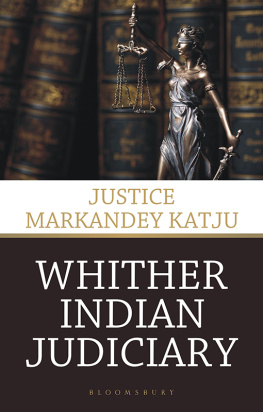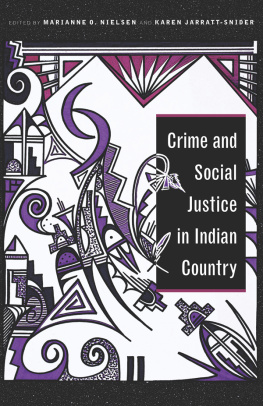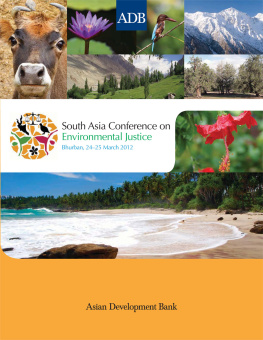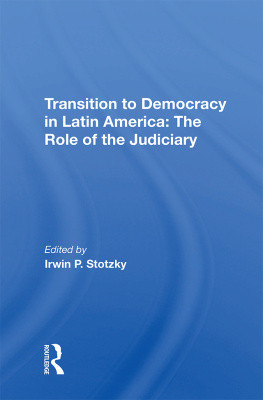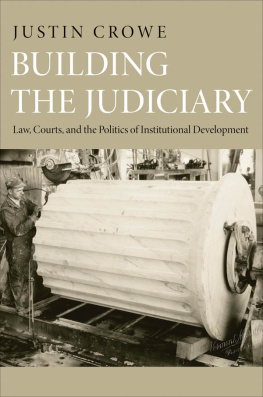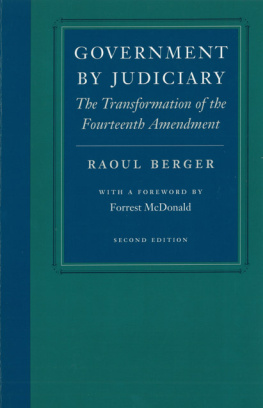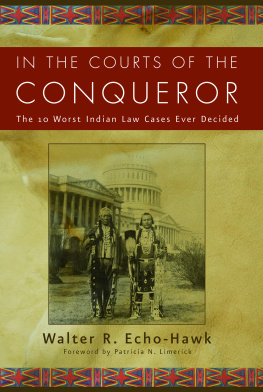Justice Markandey Katju - Whither Indian Judiciary
Here you can read online Justice Markandey Katju - Whither Indian Judiciary full text of the book (entire story) in english for free. Download pdf and epub, get meaning, cover and reviews about this ebook. year: 2018, publisher: Bloomsbury India, genre: Politics. Description of the work, (preface) as well as reviews are available. Best literature library LitArk.com created for fans of good reading and offers a wide selection of genres:
Romance novel
Science fiction
Adventure
Detective
Science
History
Home and family
Prose
Art
Politics
Computer
Non-fiction
Religion
Business
Children
Humor
Choose a favorite category and find really read worthwhile books. Enjoy immersion in the world of imagination, feel the emotions of the characters or learn something new for yourself, make an fascinating discovery.
- Book:Whither Indian Judiciary
- Author:
- Publisher:Bloomsbury India
- Genre:
- Year:2018
- Rating:3 / 5
- Favourites:Add to favourites
- Your mark:
- 60
- 1
- 2
- 3
- 4
- 5
Whither Indian Judiciary: summary, description and annotation
We offer to read an annotation, description, summary or preface (depends on what the author of the book "Whither Indian Judiciary" wrote himself). If you haven't found the necessary information about the book — write in the comments, we will try to find it.
Whither Indian Judiciary — read online for free the complete book (whole text) full work
Below is the text of the book, divided by pages. System saving the place of the last page read, allows you to conveniently read the book "Whither Indian Judiciary" online for free, without having to search again every time where you left off. Put a bookmark, and you can go to the page where you finished reading at any time.
Font size:
Interval:
Bookmark:

WHITHER INDIAN JUDICIARY
WHITHER INDIAN
JUDICIARY
Justice Markandey Katju

BLOOMSBURY INDIA
Bloomsbury Publishing India Pvt. Ltd
Second Floor, LSC Building No. 4, DDA Complex, Pocket C 6 & 7,
Vasant Kunj New Delhi 110070
BLOOMSBURY, BLOOMSBURY INDIA and the Diana logo are trademarks of
Bloomsbury Publishing Plc
First published in India 2018
This edition published 2018
Copyright Justice Markandey Katju, 2018
Justice Markandey Katju has asserted his right under the Indian Copyright Act to be identified as Author of this work
All rights reserved. No part of this publication may be reproduced or transmitted in any form or by any means, electronic or mechanical, including photocopying, recording, or any information storage or retrieval system, without prior permission in writing from the publishers
Bloomsbury Publishing Plc does not have any control over, or responsibility for, any third-party websites referred to or in this book. All internet addresses given in this book were correct at the time of going to press. The author and publisher regret any inconvenience caused if addresses have changed or sites have ceased to exist, but can accept no responsibility for any such changes
ISBN : HB : 978-9-3861-4112-5 eBook: 978-9-3861-4125-5
2 4 6 8 10 9 7 5 3 1
Created by Manipal Digital Systems.
Bloomsbury Publishing Plc makes every effort to ensure that the papers used in the manufacture of our books are natural, recyclable products made from wood grown in well-managed forests. Our manufacturing processes conform to the environmental regulations of the country of origin.
To find out more about our authors and books visit www.bloomsbury.com and sign up for our newsletters
Table of content
This book becomes all the more relevant in view of the speech of the former Chief Justice of India, Justice T.S. Thakur, while addressing the inaugural session of the Joint Conference of Chief Ministers and Chief Justices of High Courts on 24 April 2016 in New Delhi. The event was also attended by the Prime Minister and his senior colleagues and the senior judges of the Supreme Court, apart from the chief ministers and the chief justices of the States. In his speech, in a choking voice, the CJI lamented that nothing is moving in the judiciary and arrears of the Courts have been mounting. About 50 per cent of the posts of the judges of the High Courts are vacant and there remains a tug-of-war between the Central Government and the state governments, as to who is responsible.
I have been a lawyer for two decades (1971-1991) and a judge (1991-2004) in Allahabad High Court, where I also took office as Acting Chief Justice. Thereafter, I served as the Chief Justice of the Madras High Court, Chief Justice of the Delhi High Court and finally, as Judge of the Supreme Court of India, from where I retired in September 2011. As such, I know the working of the Indian judicial system extensively and intensively.
Has the Indian judiciary met the expectations of the Indians? In all countries and in all periods of history, a judiciary has been indispensable for society. This is because it is in the nature of things that there will be some disputes between people. Also, there arise disputes between people and State authorities. Hence, society requires a forum, where such disputes are resolved peacefully; otherwise they will be resolved violently with guns, bombs and knives. Hence, a judiciary is necessary to maintain peace in society and that is its main purpose.
For example, a person who has a land comes to the Court over property dispute and files a case against his adversary. The lawyers of both parties are heard by the judge, who then gives his verdict. Even if this verdict goes against one party, that party is pacified by the fact that he was given a hearing and the decision was given on certain settled legal principles. It is for this reason that since time immemorial, a judiciary is necessary in every society.
For satisfactory functioning of the judiciary, however, three things are necessary: (a) the judge should be honest; (b) the judgement should be given on certain settled legal principles and not whimsically or arbitrarily and; (c) there should not be a delay in deciding cases. If any of these essential requirements are missing, the efficiency of the judiciary is compromised.
Has the Indian judiciary met these requirements? There is a perception that there is some corruption in the judiciary. Cases are sometimes decided inconsistently with legal principles. And usually, there is an inordinate delay in deciding cases. All this is explained in detail, in this book.
In this book, I have mentioned my experience in the judiciary and written various accounts of the judicial world, where I have spent the best years of my life. With a staggering load of 32 million cases, the Indian judiciary is clearly unable to dispose of cases quickly. Litigants keep waiting for years in vain. In one case, decided by a bench of the Supreme Court of which I was a member, the suit was filed in 1947 and we disposed of the appeal in 2007. In another case, it took fifty years to conclude the litigation.
The Allahabad High Court, my parent High Court, had set a norm that every subordinate judiciary judge shall have at one time, not more than 300 cases pending before him and a Sessions Judge shall have not more than seventy-five sessions trials in his docket. When I was the judge of the Allahabad High Court, a judge of the UP subordinate judiciary came to see me. I enquired as to the number of cases pending in his Court alone. He gave a staggering figure of 30,000 cases. Another subordinate judiciary judge told me that he had 21,000 cases pending before him and yet another had 15,000 cases. A Sessions Judge of UP told me that he had 1,400 trials pending in his Court.
Now, if a man can lift a hundred pounds of weight and an elephant is put on top of him, what will happen? He will collapse! This is precisely what has happened to the Indian judiciary. It is estimated that even if no fresh case is filed, it will take 360 years to dispose of the present backlog. Drastic measures are required to remedy the situation but there are vested interests which will oppose that.
In the US, 93 per cent of disputes are resolved by mediation and other alternative dispute mechanisms; only about 7 per cent of cases are decided by the Court. In our country, on the other hand, mediation has been initiated in some places, but it has not caught on appreciably and hence the malady persists.
In my own career as a judge, I have been sometimes unconventional and I tried to give path-breaking judgements to help society move forward, where I felt that the law had stagnated. But what can one judge do alone?
India is presently passing through a critical transitional period in its history. I believe that in this period, while ordinarily judges should exercise restraint and decide cases on settled legal principles, in exceptional cases, they should depart from them. For instance, when a legal norm is required, at a certain stage of the historical development of society and the society is not able to run smoothly without that norm. Ordinarily, legal norms are created by the legislature but sometimes the legislature may be unwilling or unable, for some reason, to create such norms. In such exceptional cases, judicial legislation may be justified, otherwise not. There is broad separation of powers under the Constitution between the three organs of the state and ordinarily it is not proper for one organ of the state to encroach into the domain of another. Unfortunately, this principle is at times violated by many judges.
Font size:
Interval:
Bookmark:
Similar books «Whither Indian Judiciary»
Look at similar books to Whither Indian Judiciary. We have selected literature similar in name and meaning in the hope of providing readers with more options to find new, interesting, not yet read works.
Discussion, reviews of the book Whither Indian Judiciary and just readers' own opinions. Leave your comments, write what you think about the work, its meaning or the main characters. Specify what exactly you liked and what you didn't like, and why you think so.

